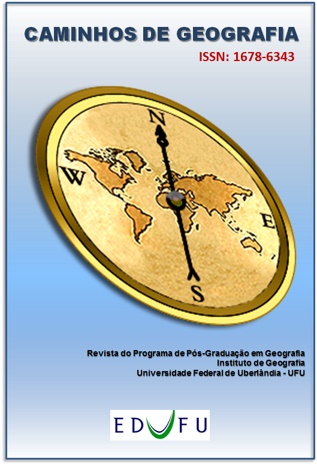ENVIRONMENTAL FRAGILITY PROVIDED BY SOILS OF A PLATEAU EDGE OF SOUTH BRAZIL, ON ATLANTIC FOREST BIOME
DOI:
https://doi.org/10.14393/RCG228356109Palavras-chave:
Low altimetric amplitude, Land-use capacity, Soils variability, Shallow soils, Intensive land-useResumo
Plateau areas have been considered with high land-use capacity in the Brazilian Meridional Plateau Edge of South Brazil. These areas belong Atlantic Forest biome, the second most extinction threatened ecoregion in the world, and weak knowledge about the environment leads to intensive use and degradation. We aimed to identify soil fragility and land-use capacity and limitation of the Brazilian Meridional Plateau Edge, in South Brazil, by the soil properties. Soil morphology, steady-state water infiltration, and physical and chemical properties at 0.00-0.10 and 0.10-0.20 m layers were evaluated at 57 sampling points in a grid of 20 x 20 m. Although under a small elevation slope, these areas have high soils and their properties variability, which implies high natural fragility. Unlike the soils and properties expected by farmers and scientists, naturally fragile soils (Leptosols, Regosols) with only patches of developed soils (Cambisols, Alisols, Planosols/Gleysols) predominate in these areas. The proper land-use and management of the soil and its landscapes depend on a detailed knowledge of the soil. Because, considering only the expected soil and environment capacity without the evaluation obtained with this study, the soils were intensively used and degraded.
Downloads
Downloads
Publicado
Edição
Seção
Licença
Autores que publicam nesta revista concordam com os seguintes termos: a) Autores mantém os direitos autorais e concedem à revista o direito de primeira publicação, com o trabalho licenciado sob a Creative Commons Atribuição-NãoComercial-SemDerivações 4.0 Internacional. b) Autores têm permissão e são estimulados a publicar e distribuir seu trabalho online (ex.: em repositórios institucionais ou na sua página pessoal), já que isso pode gerar alterações produtivas, bem como aumentar o impacto e a citação do trabalho publicado. c) Em virtude de aparecerem nesta revista de acesso público, os artigos são de uso gratuito, com atribuições próprias, em aplicações educacionais e não-comerciais.











